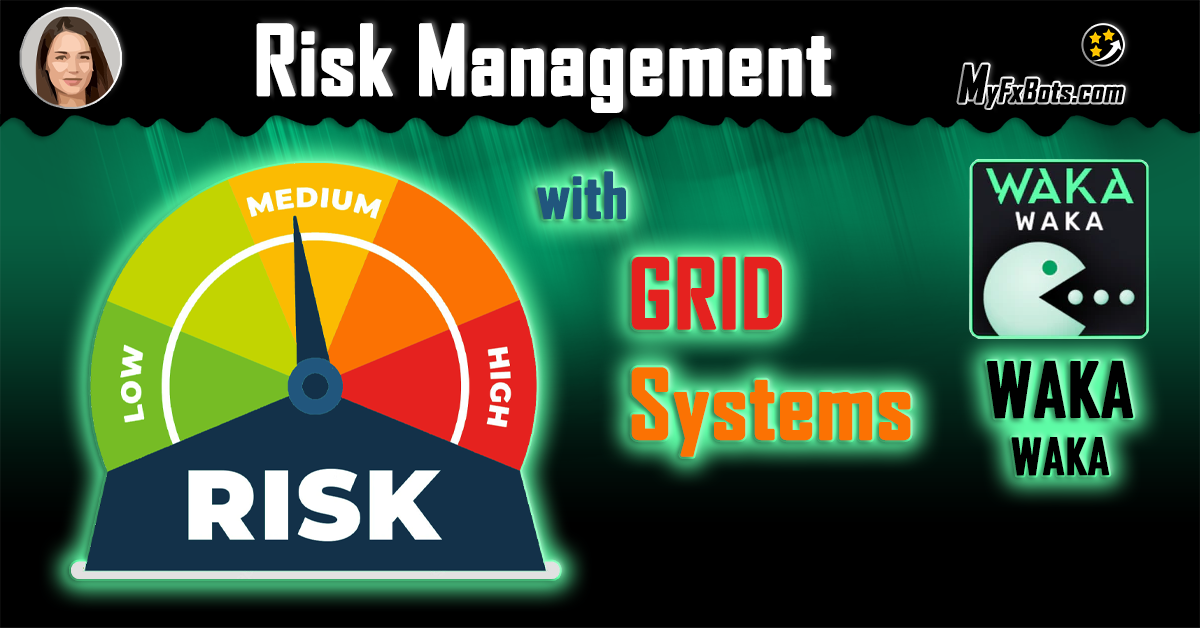Every once in a while, I write posts about risk management and how to use it correctly. However, my previous posts were rather short. This time, I would like to dive deeper into this topic and cover everything essential about it in relation to Waka Waka and pretty much all other grid systems.
-
Money management
The first thing I always start with is money management. Simply put, it's how big the lot size you want to open in relation to your deposit size. In Waka Waka and Golden Pickaxe, it's regulated by the 'Lot-sizing Method' parameter and others related to it. In most cases, it's enough to choose one of the predefined risk levels from low to high in this parameter, and that's it. That's all money management most people will need. You can see how Valeriia Mishchenko's EAs performed with each risk level in their guides. For example, p. 57 of the Waka Waka guide shows high-quality test results of Waka Waka using 2 different quotes sources for many years.
-
Risk management
To keep it short, that's how the EA deals with drawdowns. In most cases, it's enough to use the simplest 'Max Floating Drawdown %' option. For example, if you set it to 30, the EA will close all trades in case of reaching a 30% drawdown, securing the remaining 70% of the account. However, this parameter is connected with money management. If you set too tight of a drawdown limitation with a high-risk level, it'll frequently be triggered during the normal work of the EA, interfering with its trading. E.g., it doesn't make sense to choose high risk and set the maximum drawdown at 5%. That'll make you bump into this drawdown limitation time and time again, ultimately meaning losses. I usually recommend setting this value above the maximum drawdown seen in the tester. If you can't test the EA properly yourself, I have already compiled long-term test results in guides, as mentioned previously.
-
Default parameters
People frequently ask about what settings of the EA should they use. The answer is that the default settings should be the best in most cases. This sounds boring, but profitable professional trading and investments are always boring. There's a saying about that attributed to Warren Buffet: 'Beware the investment activity that produces applause; the great moves are usually greeted by yawn's'. If you are bored with trading and investments, it usually means you are on the right track. There are plenty of variables in Valeriia Mishchenko's EAs that change results significantly: from core parameters of the system (how to choose an entry), to exit parameters (TP level) and grid settings (coefficients and grid spacing). What some people don't understand is that default values are not chosen randomly. They are a result of careful market research aimed at identifying market reversal levels. Default parameters of the EA work together with the aim of exploiting existing market reversals on the pairs it trades. If you change an entry-level, TP value, or grid setting, you might interfere with this logic. For example, if you make the TP value larger, the EA will exit trades later, and the reversal level might not be enough to close trades and get out of a trending movement. If you change grid coefficients to, let's say, 1-1-1 (so that all orders have the same lot size), you will interfere with the trading logic, making it much more difficult for the EA to get out of the grid. Of course, if you are a professional trader, you know it very well and may ignore this recommendation. But if that's the case, this whole post is just 2x2=4 for you, and you won't find it particularly useful. If you found something new or interesting in it, chances are, default parameters are better for you.
-
Make sure your money management is in line with your deposit size and account leverage
By definition, one can't use high risks with a 1:30 account leverage. The same goes for $100 – it's impossible to use low risks with a small deposit size. You can find historical values and deposit size recommendations in the same table in the guides of Valeriia Mishchenko's EAs.
-
Make sure your VPS works 24/5
If the EA entered a position, then your VPS went offline for a day or two and was not in the market to catch a reversal, which may bring losses to you. Make sure your VPS is stable and also put the terminal in the startup folder of your system. In this case, if your VPS is restarted (which happens every once in a while with any server), the terminal will get back online as soon as the server gets up and running.
-
And the last suggestion – take it seriously and plan ahead
What you might not have understood when reading the post is that each example I have outlined above is real. There were users of Valeriia Mishchenko's EAs who used high risks with a tight drawdown limitation at 5%, there were users who changed grid coefficients, some used the EA with a small deposit and high risk on a 1:30 leverage account, and so on. And each of these examples meant losses. Each of these rules meant someone lost real money. There is a saying in the health and safety industry that all safety regulations are written in blood. It's true, and the same goes for the rules outlined in this post. Each of them is written with losses of traders. It's smart to take all of them into account and trade accordingly, with strict risk and money management in place.
I hope this post is not too long for you to just skip it if it may be useful for you. I highly recommend reading it if you use any grid system from any developer.

































